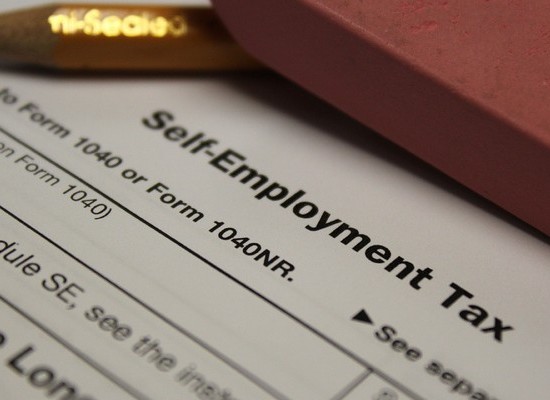You’re self-employed, which means that you no longer have to punch a clock or make that daily commute to spend the day in a cubicle. However, along with the freedom to set your own schedule comes the responsibility to make sure Uncle Sam gets his cut – and receives what you owe in a timely fashion.
That means either setting aside funds from your earnings to cover your tax obligation next April, or paying quarterly estimated taxes. Regardless of which strategy you take, the IRS has developed a worksheet to use to calculate how much you should set aside – IRS Form 1040-ES: Estimated Tax for Individuals.
Using IRS Form 1040-ES: Estimated Tax for Individuals
The IRS makes it easy (or at least as easy as paying taxes can be) to satisfy your federal income tax obligations by making quarterly estimated income tax payments. To begin making estimated payments, first download IRS Form 1040-ES, Estimated Tax for Individuals from the IRS website. For more details on how to complete the form, download Publication 505, Tax Withholding and Estimated Tax. The form is a PDF document that you can fill in and save with your information at any point.
Expected Wages
To calculate your expected wages for the coming year, obtain a copy of your prior year’s tax returns and locate the figure for your adjusted gross income to use as a starting point to estimate your income for the coming year. Subtract either your itemized deductions from your return or the standard deduction (whichever is larger) from your adjusted gross income. If the resulting amount is negative, adjust the total to zero. The result is an estimate of your wages for the coming year.
Calculate Estimated Tax
Once you’ve finished this calculation, use the included Tax Rate Schedule to calculate your estimated tax and enter the figure on the appropriate line of IRS Form 1040-ES. If you are subject to Alternative Minimum Tax (AMT), include the amount generated from IRS Form 6251 on IRS Form 1040-ES as additional tax. Subtract any credits you’re entitled to, such as the Earned Income Credit or deductions for use of your vehicle for business, medical or charitable purposes. The result is your estimated tax.
Self-Employment Taxes
Use the resulting figure as the starting point to estimate your self-employment taxes. First, multiply your expected wages for the coming year by 92.35%, or .9235, and enter the result on line 3 of IRS Form 1040-ES. Multiply the figure on line 3 by 2.9% or .029 and enter the result on line 4 of IRS Form 1040-ES. Subtract your expected wages for the coming year from $113.700 (the maximum income subject to Social Security taxes). If the result is zero or less, enter 0 on line 9 of IRS Form 1040-ES, and skip to line 10 on the form. If the result is zero or greater, compare this figure to the figure on line 3, and multiply the smaller result by 12.4% or .124 and enter the result on line 9 of Form 1040-ES. Add the figures from line 4 and line 9 together and enter the result on line 10. Multiply the figure on line 10 by 50% or .50 to obtain your estimated self-employment tax.
After you’ve completed all these calculations, add the estimated tax to the estimated self-employment tax. If the result is $1,000 or more, divide the total by four to determine your quarterly estimated payments. If the figure is less than $1,000, the IRS does not require you to make quarterly estimated payments. But before you throw your calculator across the room in frustration for having wasted so much time, consider this: you’ve generated a good estimate of how much you should set aside to cover your tax obligations.
Set Aside Funds
Whether or not you are obliged to make quarterly tax payments, you will still need to set aside funds to cover your income tax obligations. If you have a paid-wage job in addition to self-employment, you can ask your employer to deduct more from each paycheck to make the process automatic. If not, set up a “pay yourself first” account with your financial institutions, and commit to making regular deposits into the account until you collect the funds you need for each quarter.
By following this strategy, you’ll be far less stressed when you file next year’s federal income tax returns. If you still need assistance, feel free to give us a call.
Photo: Philip Taylor PT
[tagline_box link=”/get-tax-help” button=”Get Tax Help” title=”Let Optima Tax Relief Help” description=”Our professionals will put your mind at ease.”][/tagline_box]
